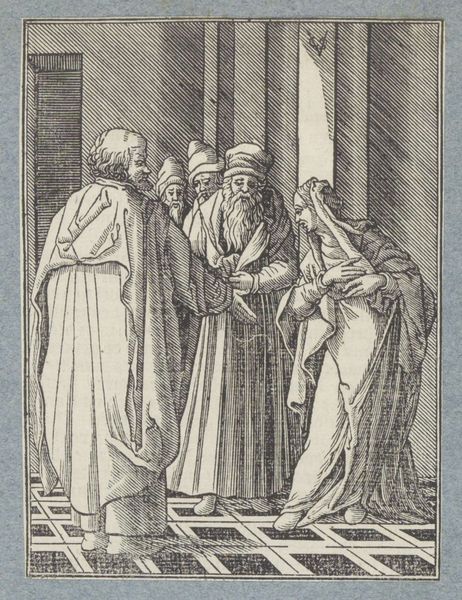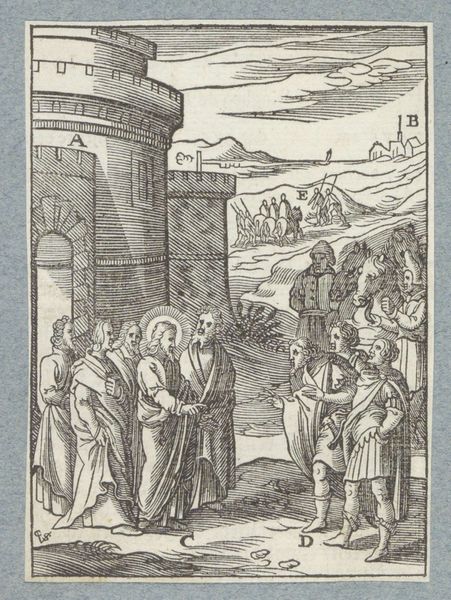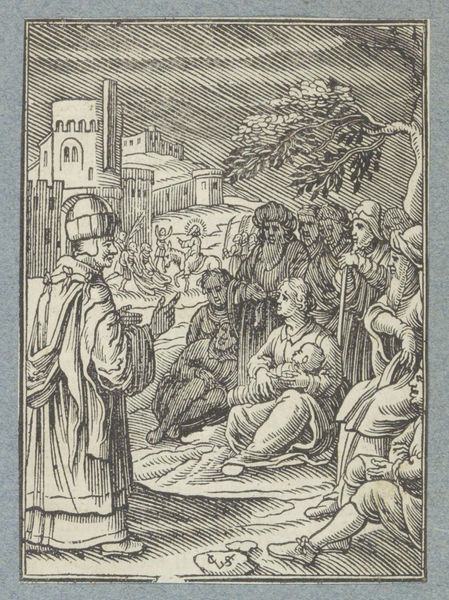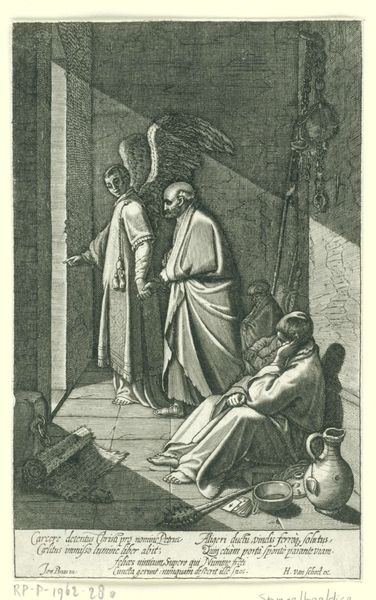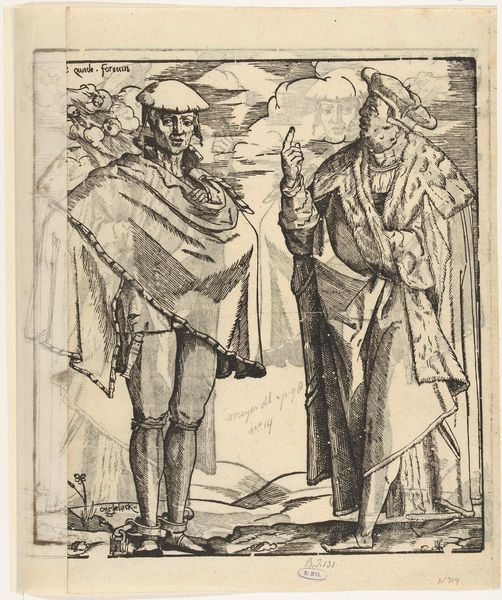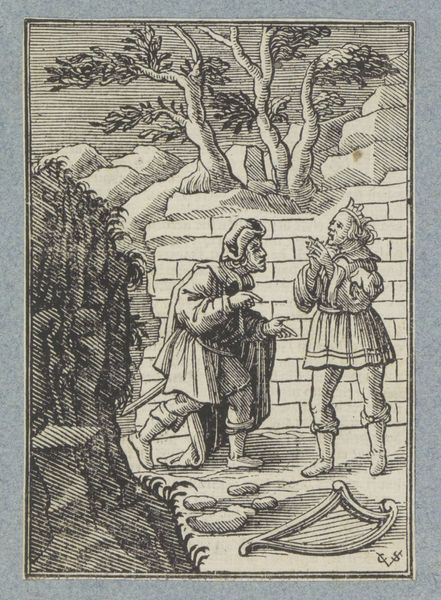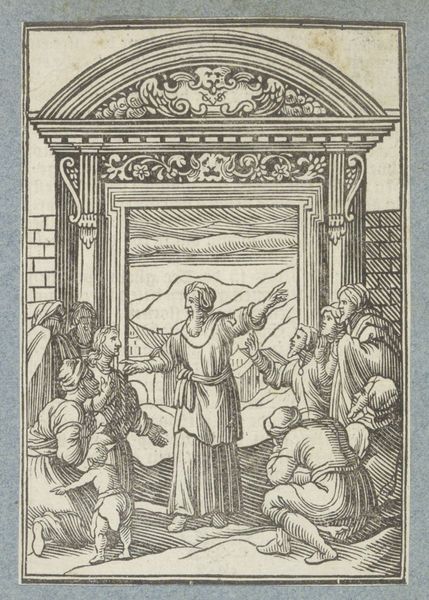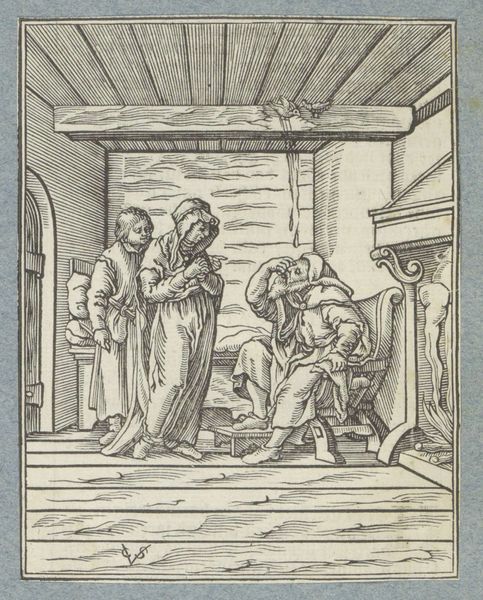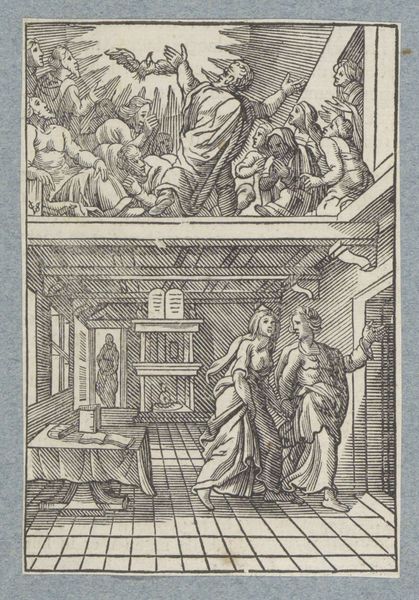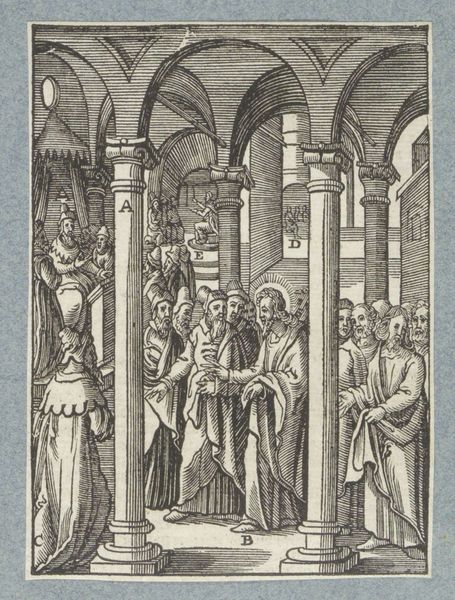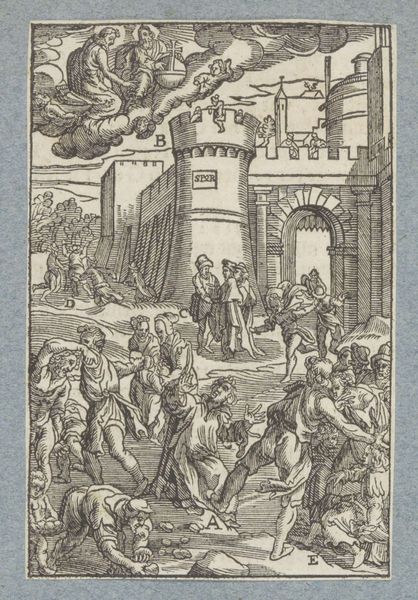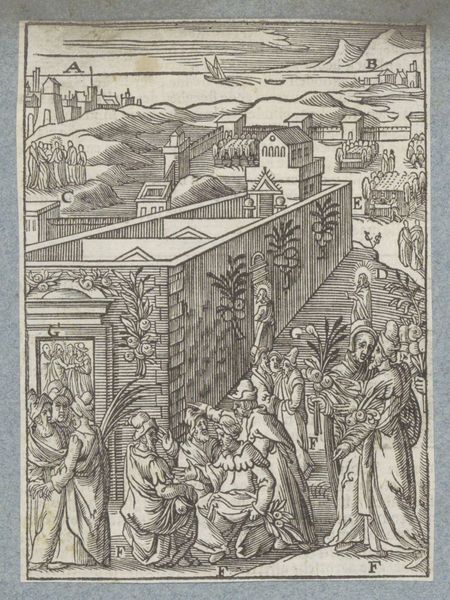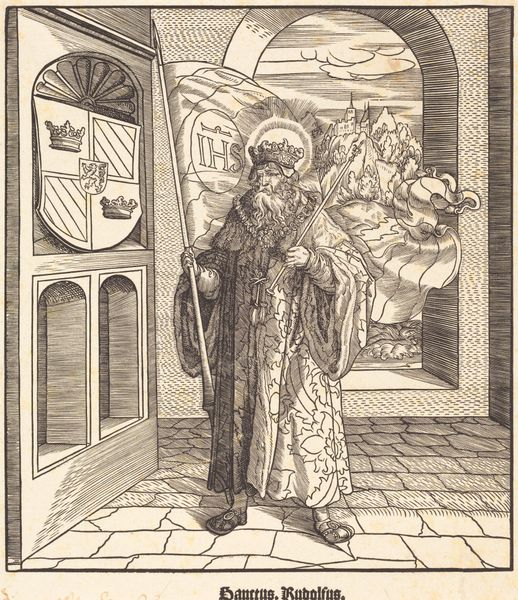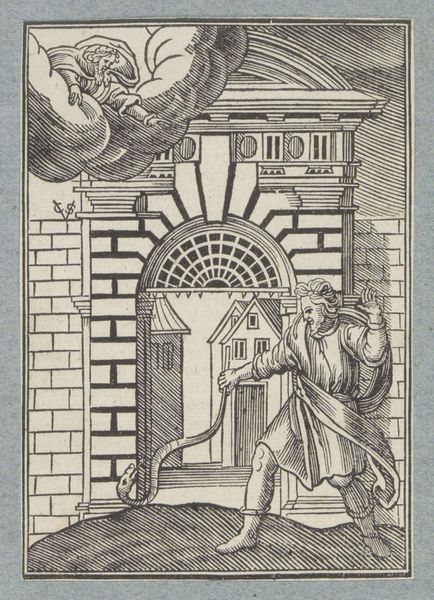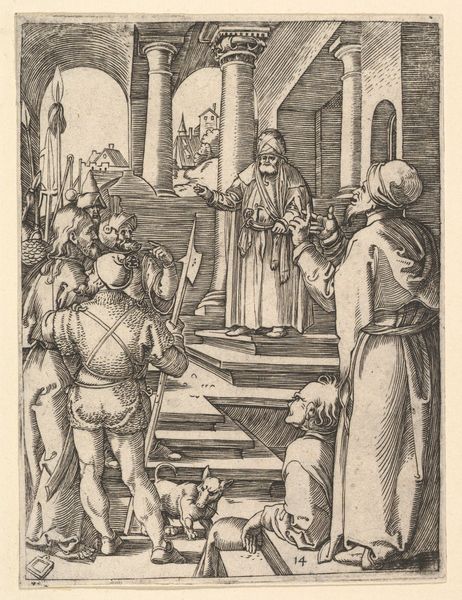
engraving
#
portrait
#
toned paper
#
baroque
#
pen sketch
#
pencil sketch
#
sketch book
#
figuration
#
personal sketchbook
#
sketchwork
#
pen-ink sketch
#
line
#
sketchbook drawing
#
history-painting
#
storyboard and sketchbook work
#
sketchbook art
#
engraving
Dimensions: height 103 mm, width 87 mm
Copyright: Rijks Museum: Open Domain
Curator: Christoffel van Sichem II created this engraving, "Priesterkleding," or "Priestly Clothing" around 1645. Editor: The stark, high contrast feels inherently dramatic. And I can see the hand at work—you feel the texture of the block. It's clearly an engraving, look at that incredibly detailed hatching. Curator: It's striking, isn’t it? Consider how these visual symbols function. The figure on the left wears the High Priest's ceremonial garments. Each piece has specific symbolic weight in the Hebrew tradition. The breastplate, the headdress—each speaks to spiritual authority and divine connection. Editor: Exactly. Look how labor intensive those details are—the cutting, the inking, the printing—all done by hand. It forces me to consider the cultural value placed on representing these religious figures and the skill involved in producing such imagery for a broad audience. Was it commissioned, mass-produced, what were the social factors influencing this piece? Curator: It reflects the Baroque period’s interest in both realism and heightened emotionality. The contrasts in the scene—between the richly adorned priest and the plainer figure beside him, with that broken architecture—hints at narrative possibilities. There's tension there. Who is that figure, and why are they in juxtaposition with each other? Editor: Perhaps it represents a challenge to traditional forms? Look at that wall – destroyed as if to denote this challenge you speak of. Still, what materials and labor were used to produce prints like these would’ve dictated the extent to which these images circulated, right? Think about the engraver, maybe toiling away at creating repeatable images that become objects of both devotion and dissemination. Curator: It offers us a window into the cultural and religious perspectives circulating at the time. The deliberate visual language creates a specific emotional resonance and memory. Editor: It truly makes you consider art-making and distribution processes, how those elements impact value and understanding across a community of makers and users of such work. Curator: Precisely, examining not just what it depicts, but also why. Thank you for shedding light on these interesting material and societal perspectives! Editor: And thank you, those symbolic lenses gave me so much insight into how the social meanings came to be.
Comments
No comments
Be the first to comment and join the conversation on the ultimate creative platform.
